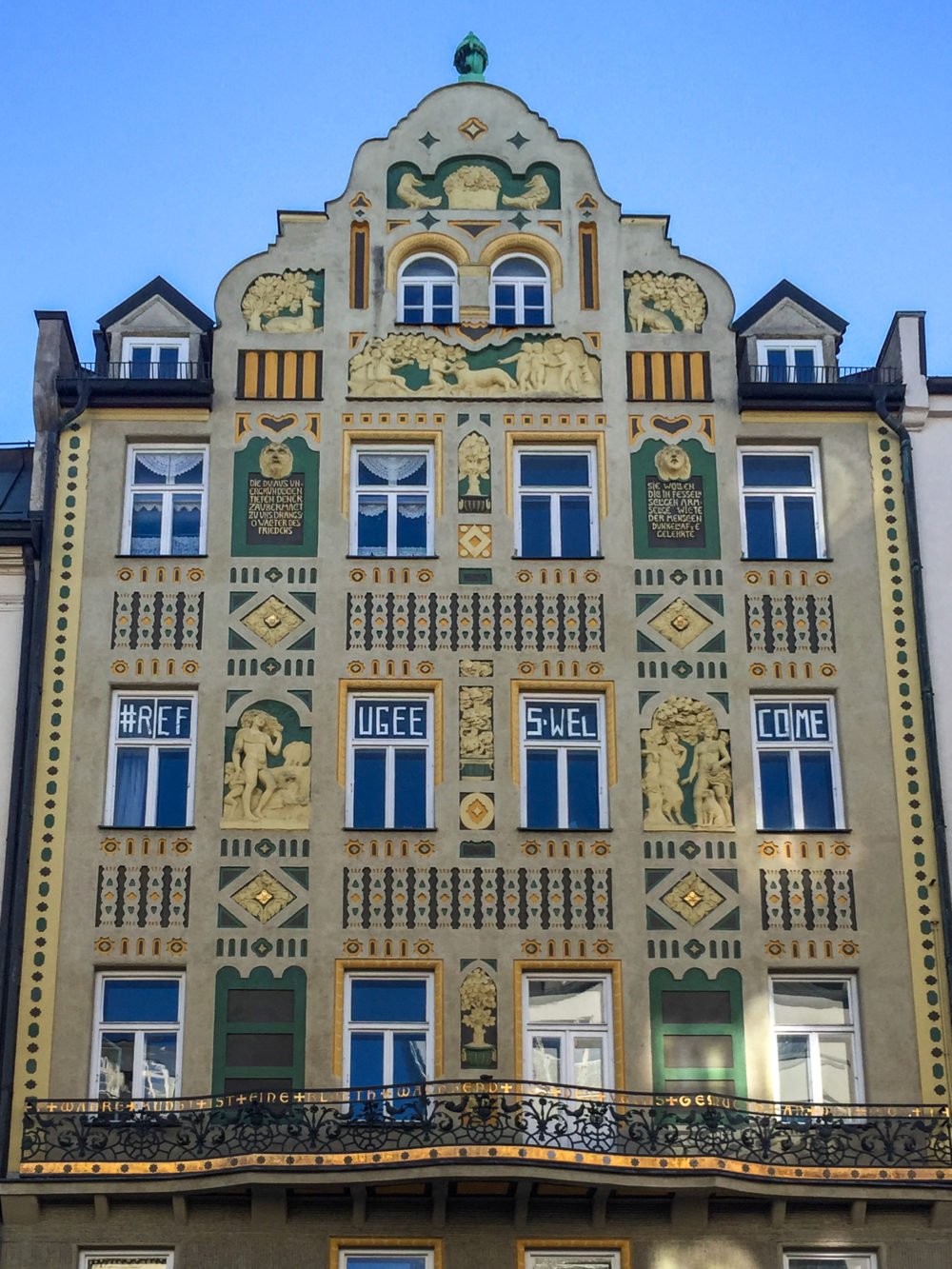#14304. Historical Building with Richly Decorated Eclectic Art Nouveau Façade

Before us stands a striking example of an eclectic façade in a style gravitating toward European Art Nouveau with Neo-Renaissance elements. This impressive multi-story building features rich ornamental decoration and a well-thought-out composition. The façade is adorned with sculptural bas-reliefs, geometric patterns, and decorative panels in a green and golden color scheme.
Of particular note is the curved pediment with undulating outlines that crowns the building, giving the entire composition a picturesque silhouette. The upper part of the façade is enriched with relief images, while the central zone is emphasized by symmetrical windows with arched elements. Windows at different levels have varied framing, creating rhythmic diversity.
The façade design demonstrates thoughtful symmetry and a hierarchy of decorative elements: from large sculptural compositions in the upper part to smaller geometric patterns evenly distributed across the entire surface. There's an interesting interplay between flat ornaments and volumetric decorative elements, creating a play of light and shadow.
When creating a modern façade design, several techniques can be borrowed from this historical example: the use of contrasting color accents, organization of decorative elements into vertical and horizontal rhythmic rows, and special attention to proportions and the expressive silhouette of the building. Even in a simplified form adapted for contemporary materials, such techniques will help create a memorable and harmonious appearance for a building.